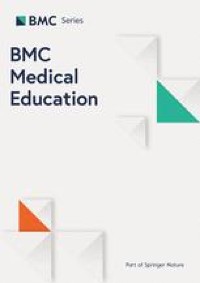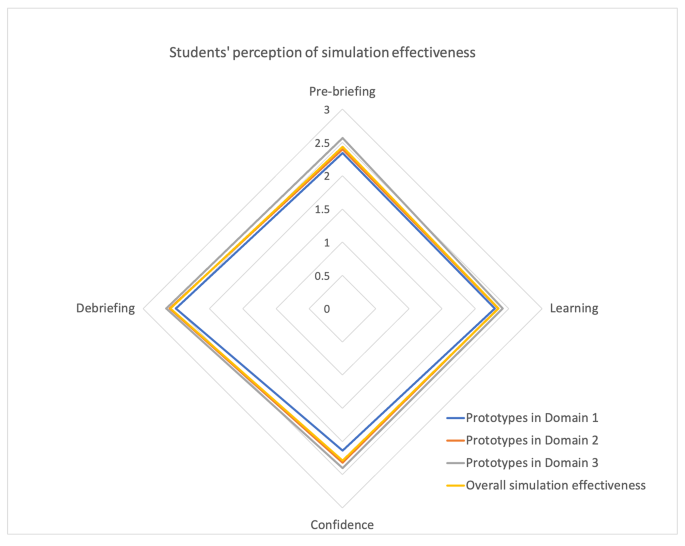Topics for virtual simulation from literature review
Topics in literature were retained after a relevancy screening and then categorized based on the content areas of disease, symptom, psychosocial issues, communication, community health care, skill, customer satisfaction, knowledge, and critical care from previous studies and symptoms, specific cases, routine tasks, and patient safety from major nursing classification systems.
Topics for virtual Simulation in focus group interviews
Focus group participants reported a wide range of topics as major contents for virtual simulation in nursing education. They are nursing care in specific situations, experiencing the routine tasks of nurses, mastering nursing skills, symptom management, assuring patient safety, knowledge acquisition, using intensive equipment, and giving emotional care. [Supplementary file 2 here]
Curriculum content for virtual simulation
Three core domains of curriculum content for virtual simulation (Table 1) derived from major topics were included: enhancing decision-making, experiencing low-exposed situations, and building professional resilience. The domain of enhancing decision-making contains two subdomains: symptom assessment and management, and skills acquisition. Representative topics for symptom assessment and management included management of fever, bleeding, and ineffective respiration. Using intensive medical equipment such as the ventilator and extracorporeal membrane oxygenation as well as health assessment represented the subdomain of skills acquisition.
Evaluation of the Curriculum Content and structure: content evaluation by Expert Panels
Table 2 shows the scores of content validity of the developed topics including major domains, subdomains, and representative topics for the virtual simulation curriculum in nursing education. The scale’s content validity index/universal agreement (S-CVI/UA) calculation method was used to check S-CVI of the developed curriculum components. A score of 0.80 or greater is recommended as a percentage of all 3 or 4 questions by all experts[19], confirming that all components had values greater than 0.80. Descriptive feedback from expert panels on the developed curriculum was analyzed.
Creating, implementing, and evaluating courses of representative topics
We selected nine representative topics from the curriculum contents for virtual simulation. The nine representative topics include dehydration, hypoglycemia, and upper gastrointestinal bleeding scenarios (symptom management under enhancing decision-making); health assessment scenarios (skills acquisition under enhancing decision-making); apneotic event management and epidemic disaster scenarios (experiencing low-exposed situations); experiencing the operating room scenario (experiencing low-exposed situation); emotional ventilation, otherwise known as the nurses’ time off, scenario (quick stress relief under building professional resilience); and a scenario of detecting and reporting errors in transfusion (patient safety under building professional resilience).
We built two virtual environments and constructed nine scenario prototypes (Fig. 3). They were five prototypes in a virtual community at Second Life and four prototypes in a virtual program platform constructed with Unity 3D. The virtual environment in Second Life comprised a three-story acute care hospital, remote village having a small health post, disaster area, and nurses’ resting area. The virtual hospital involved three layers in total. The first floor contained the orientation information such as the proper keyboard operation and the item operation method in virtual space. The second floor consisted of a nurse station, five rooms, and a debriefing room. Each room had its own scenario environment. On the third floor of the virtual hospital, the large display boards were linked to Internet resources for the pre-learning for each scenario. The information was classified and displayed according to each scenario so that learners could view the linked materials by expanding them when they clicked. In addition, the skill lab was organized in separate classrooms in order to operate and practice the items necessary for each scenario and provide spaces for adaptation to the scenario progression.
In a virtual program built using Unity 3D, there were four scenarios to experience in the virtual hospital. Each simulated scenario consisted of a practice and test mode, and learners could take two practices and one test for each scenario. In practice mode, learners could take time to adapt to the progress of the simulation by operating the various objects in the virtual environment. In the test mode, virtual simulations could only be operated for a set time, and other colleagues and professors could provide feedback on the learners’ nursing behavior while experiencing the simulations. Students who completed the simulation in test mode could check the feedback by other colleagues or professors after self-reflection. After self-reflection and checking of the feedback, learners and professors were expected to gather in the debriefing room to reflect on the learning process and share their experiences and opinions.
Operating components and learner engagement strategies
In the present virtual simulation prototypes, we developed the program using both engines of Second Life and the intranet system using UNITY 3D. Unity 3D was used for potential expansion toward virtual reality simulation, but the current program was built and operated in the form of screen-based partially immersive simulation due to its learner accessibility and system stability. Action strategies for effective education included face-to-face meetings, operation, concept mapping, recording the performance, self-evaluation and reflection, and experiential learning. Overall, scenarios applied regular mode of representation and interaction using avatars and two-way interaction.
In the virtual campus, students enter the program using their ID and password. They then choose their own avatar and assigned scenario. After having the short tutorial session on navigating in the virtual world, students could go to the pre-briefing room to check related guidelines and protocols. Afterwards, they could then go to the patient situations alone or in groups to solve a patient case. There were two modes to experience the scenario for students, one for practicing multiple times and one for testing. Students could experience both modes. After the appropriate nursing interventions, they then self-reflect using the Situation-Background-Assessment-Recommendation format and concept mapping before they have the group-debriefing session.
In this developed simulation curriculum, the learning outcomes included enhancing metacognitive abilities of nursing students. To achieve the desired learning outcomes, all virtual simulation scenarios and prototypes were constructed using the framework of experiential learning. Participants were expected to have concrete experience in virtual environments, and then through reflective debriefing, guided-structured self-reflection, and group reflection, they had opportunities to engage in abstract conceptualization. The debriefing included reflective observation using feedback and guidance with concept mapping and clinical judgment rubric for recorded performance. In the subsequent virtual simulation experience in other scenarios, they had more opportunities for active experiments in further simulations rather than real life using their established schema. This circle of experiential learning as designed to promote learners’ metacognitive competence to augment the clinical experience.
Evaluation of the developed nine prototypes by expert panels and students.
The validity of the contents of the developed nine prototypes was tested through consultation with nine expert panels. The content was reviewed for items that fell under 1.00 [19] when it was judged by expert panels (Supplementary file 3). Students used the representative prototypes of virtual simulation and reported the simulation effectiveness. The first domain was clinical decision making, the second was low exposed situations, and the third was building professional resilience. There were no low responses under two in score of each subfactor. Figure 4 shows students’ reported simulation effectiveness after using the prototypes (Fig. 4).




